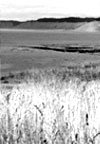| |
|
 |
 |
 |
|||
 |
|||||
 M
MResearch Support Facilities M Relevant Fields of Study M Recent Case Studies M Contact Info |
 |
Synopsis: M Fort Vancouver was initially established as a National Monument in 1948 to protect and maintain “the site of the original Hudson’s Bay stockade and sufficient surrounding land to preserve the historical features of the area” for the benefit of the people. The Department of the Interior’s report on the same legislation concurred, stating that the lands so dedicated should fulfill “two essential requirements the preservation of the historic stockade . . .and the preservation of the historic parade ground of the later United States Army post.” Thus, the purpose is to maintain the site of this primary center of early economic, cultural, and military development in the Pacific Northwest and to interpret the important part played in our nation’s westward expansion by the fur trade and other activities carried on at the fort. To further achieve this goal, Congress passed the act of June 30, 1961, enlarging the boundaries of Fort Vancouver and redesignating the monument a National Historic Site. The site currently encompasses some 170 acres in a variety of conditions (Figure 4). The natural environment of the site has been heavily impacted over time by the Hudson’s Bay Company and by development, primarily US Army, which moved into the area in 1849. As a result of these impacts, almost none of the site’s historic natural environment remains. Today the site is comprised of: 62.9 acres of maintained historic landscapes with ornamental plantings and orchards, 83.3 acres of developed land (airport and railroads), and 23.8 acres of disturbed uplands and riparian areas. The uplands contain several aggressive exotic plant species and 9.3 acres of disturbed area in the Columbia River riparian corridor. In order to properly preserve and interpret the site’s full story, park management desires to re-establish a portion of the site’s natural area to show the landscape as it was upon arrival of Euro-Americans in the early 19th century. This mandate of natural environment preservation and establishment is supported by the park’s enabling legislation which refers to “sufficient surrounding land” (cultural and natural), as well as the 1978 Master Plan and 1993 Cultural Landscape Report. Current planning efforts to complete a new General Management Plan (scheduled for public release in early fall 2001) also are supportive of the reestablishment of a vestige of the areas natural environment, consisting of approximately 10 acres. The natural environment played a key role in the culture of native people and in this site being the place where the Fort was originally established. (top of page) |
|||
|
|
|||||
| Input any facilities and/or administrative support information here. (top of page) |
|||||
|
|
|||||
| Air Resources Biology Fire Ecology Geology Historical Studies Paleoecology (top of page) |
|
Plant Ecology Restoration Ecology Social Science Wilderness Management Wildlife Ecology |
|||
|
|
|||||
Genetics, Demography, and Movement of Olympic Marmots Olympic National Park Suzanne Cox Griffin, L. Scott Mills, Ph.D., Mark Taper, Ph.D. University of Montana (top of page) |
|||||
|
| |||||
Fort Vancouver National Historic Site 612 East Reserve Street Vancouver, Washington 98661-3897 360-696-7655 www.nps.gov/fova Inquiries and research permit applications should be directed to: Doug Wilson 360-696-7659 x 24 (top of page) |
|||||
|
|
|
|
|
|
| Research & Park Stewardship > The Parks > Fort Vancouver N.H.S. | |